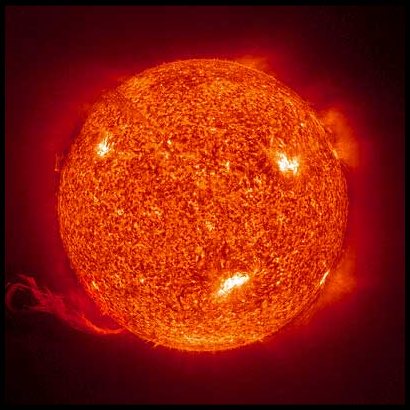It's a sunspot.
Sunspots are regions where the solar magnetic field is very strong. In visible light, sunspots appear darker than their surroundings because they are a few thousand degrees cooler than their surroundings. Most of the visible surface of the Sun has a temperature of about 5400 degrees C, but in a big sunspot the temperature can drop to about 4000 degrees C.
Sunspots come in sizes between about 2500 km and about 50,000 km. So while they are quite large, they are still much smaller than the Sun itself, which has a diameter of 1,392,000 km. Most sunspots are roughly circular in shape. Sunspots have two distinct parts: the umbra and the penumbra.

The amount of magnetic flux that rises up to the Sun's surface varies with time in a cycle called the solar cycle. This cycle lasts 11 years on average. This cycle is sometimes referred to as the sunspot cycle.
Near the minimum of the solar cycle, it is rare to see sunspots on the Sun, and the spots that do appear are very small and short-lived.
During this "solar maximum", there will be sunspots visible on the Sun almost all the time and some of those spots will be up to 50,000 km in diameter and last several weeks.
There was a sunspot maximum in 2000-2001 and the next is forecast for end of 2012 beginning of 2013

Graph of sun spots per year from 1650-1950.
Solar flares are flames that has left the surface of the Sun and leaped into space, discharging radiation and strong electrical currents that travel outward into space.
They often fall back to the surface of the Sun.
Sometimes, a very strong flare, called a Coronal Mass Ejection (CME), actually leaves the Sun and this deadly mass shoots out from the Sun towards the planets like a bullet.
Usually they don't hit anything but occasionally they hit Earth.

Most flares are small. But even a small flare can be dangerous. In 1989 a flare hit the North American continent and fried electric lines, zapped power grids in the US and Canada, and created large power blackouts.
Flares can also effect our moods and physical health. In theory, a large flare impacting the Earth could zap the ionosphere and irradiate the surface, killing every living organism that it touched.

I personally believe the
Sun is the most likely threat in the next 3 years.
Hope this clears things up
